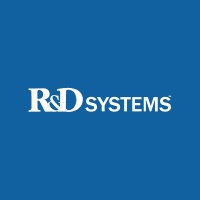CX3CL1 / Alexa Fluor 594 / 81506R
Product Details
| Description | Human CX3CL1/Fractalkine Alexa Fluor 594-conjugated Antibody | |
|---|---|---|
| Conjugate | Alexa Fluor 594 | |
| Clone | 81506R | |
| Target Species | Human | |
| Applications | ICS | |
| Supplier | R&D Systems | |
| Catalog # | Sign in to view product details, citations, and spectra | |
| Size | ||
| Price | ||
| Antigen | ||
| Host | ||
| Isotype |
About CX3CL1
This gene belongs to the CX3C subgroup of chemokines, characterized by the number of amino acids located between the conserved cysteine residues. This is the only member of the CX3C subgroup, which contains three amino acids between cysteine residues, resulting in a Cys-X-X-X-Cys configuration. The encoded protein contains an extended mucin-like stalk with a chemokine domain on top, and exists in both a membrane-anchored form where it acts as a binding molecule, or, in soluble form, as a chemotactic cytokine. The mature form of this protein can be cleaved at the cell surface, yielding different soluble forms that can interact with the G-protein coupled receptor, C-X3-C motif chemokine receptor 1 gene product. This gene plays a role in a wide range of diseases, including cancer, vasculitis, neuropathies, atherosclerosis, inflammatory diseases, and in human immunodeficiency virus infections. [provided by RefSeq, Sep 2017]
This gene belongs to the CX3C subgroup of chemokines, characterized by the number of amino acids located between the conserved cysteine residues. This is the only member of the CX3C subgroup, which contains three amino acids between cysteine residues, resulting in a Cys-X-X-X-Cys configuration. The encoded protein contains an extended mucin-like stalk with a chemokine domain on top, and exists in both a membrane-anchored form where it acts as a binding molecule, or, in soluble form, as a chemotactic cytokine. The mature form of this protein can be cleaved at the cell surface, yielding different soluble forms that can interact with the G-protein coupled receptor, C-X3-C motif chemokine receptor 1 gene product. This gene plays a role in a wide range of diseases, including cancer, vasculitis, neuropathies, atherosclerosis, inflammatory diseases, and in human immunodeficiency virus infections. [provided by RefSeq, Sep 2017]
About Alexa Fluor 594
Alexa Fluor™ 594 (AF594, Alexa 594) has an excitation peak at 590 nm and an emission peak at 617 nm, and is spectrally similar to Texas Red (ThermoFisher Scientific), DyLight™ 594 (ThermoFisher Scientific), iFluor® 594 (ATT Bioquest) and iFluor® 610 (ATT Bioquest), CF®594 (Biotium), and ATTO 594 (ATTO-TEC). Alexa 594 is commonly used for flow cytometry,fluorescence microscopy and super-resolution microscopy. It is very bright, photostable, and pH insensitive.
Alexa Fluor™ 594 (AF594, Alexa 594) has an excitation peak at 590 nm and an emission peak at 617 nm, and is spectrally similar to Texas Red (ThermoFisher Scientific), DyLight™ 594 (ThermoFisher Scientific), iFluor® 594 (ATT Bioquest) and iFluor® 610 (ATT Bioquest), CF®594 (Biotium), and ATTO 594 (ATTO-TEC). Alexa 594 is commonly used for flow cytometry,fluorescence microscopy and super-resolution microscopy. It is very bright, photostable, and pH insensitive.
Experiment Design Tools
Panel Builders
Looking to design a Microscopy or Flow Cytometry experiment?
Validation References
Reviews & Ratings
| Reviews |
|---|
Looking for more options?
482 CX3CL1 antibodies from over 22 suppliers available with over 50 conjugates.





